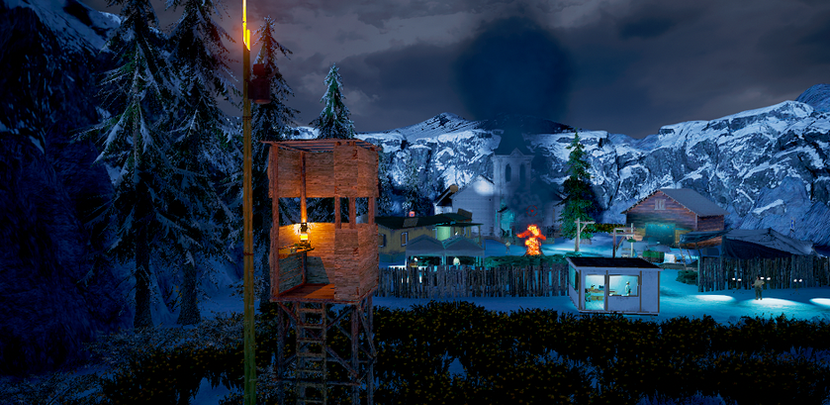
Valley of Prey
Trailer
Details
About: “Valley of Prey” is a single-player mission for Far Cry 5 (2018) focusing on stealth and level design patterns. The level takes place in a downward sloping mountain valley at night. The player must sneak through and execute dozens of enemies before taking out the primary target. The level takes on average 20 minutes to complete.
Download:
Software: Far Cry 5 Arcade Editor
Total Production Time: 105 Hours
Release Date: January 30th, 2023
Platform: PC / Console
Design Goals
Engaging Stealth Design
1. Consistent Hard / Soft Cover
I wanted to provide my players with consistent approaches to how they safely (and stealthily) traversed through my level. Throughout all of "Valley of Prey," there is hard cover on one side of the map and soft cover on the other which allows players the option of how they complete the level.
2. Alternate Routes
Due to the nature of enemy sightlines in Far Cry 5, I wanted to give my players a safe passage from different points in the map so they could attack or sneak by enemies from different areas. These alternate routes took the form of underground tunnels that the player can quickly duck in to in order to avoid enemy detection.
3. Enemy Placement / Pathing
Each enemy in "Valley of Prey" was specifically placed to influence the player's route. Enemy pathing loops allows observant players to determine prime opportunities to execute enemies. Through testing, I learned a lot about the pacing of my level - which led to adjustments that made the level more balanced.
Level Design Patterns
1. Pattern Recognition
For this project, I wanted to focus on the pattern recognition of players. I researched dozens of successful stealth patterns from popular titles and academic papers, and ultimately decided on incorporating the following patterns: hard and soft cover, vantage points, enemy paths, player-owned vs. enemy-owned spaces, verticality opportunities, alternate paths, and "refilling stations."
2. Conveyance
A large part of pattern recognition is the player's ability to determine how the specific patterns are separate from other objects in the map. This required me develop unique ways of conveying my patterns through their color, shape, and locations in the map.
3. Designer - Player Asynchronous Communication
I developed a system of "bread-crumbing" through warm and cool light that communicated safe and unsafe areas - or more accurately, player-owned vs. enemy-owned spaces. This attention to asynchronous communication required me to consistently think about the player experience while designing.
Verticality Opportunities
1. Vantage Points
The entire map is a downward sloping valley so the player is always at a higher vantage point than the enemies when entering a new part of the map. Likewise, there are various locations before major combat areas where the player can climb to get a better view of what lays before them.
2. Advantageous Vertical Combat
I designed my combat spaces to allow the player to easily climb over and around enemies from verticality opportunities. These took the form of roofs of structures, brown climbable rocks hugging the outside edges of the map, catwalks, ziplines, and bell towers.
3. "Safe Spots"
I designed specific areas within combat zones that served as "safe spots" for the player to gather their thoughts, avoid detection, and plan the next move. These safe spots took the forms of hunter's blinds, underground tunnels, and roofs of structures.
Iteration
Level Design Document

Whitebox

Initial Gameplay

Launch

Retrospective
What Went Well:
What Needs Improvement:
-
Framerate drops occur in a few parts of the level due to the amount of light conveyance
-
Some enemy placements could be adjusted to provide better pacing in the level, instead of throwing the player into difficult stealth encounters right away
-
Some highlights of the level are too hidden and became more like "Easter Eggs" that only 50% of players found
What I Learned:
-
There are 2 important design considerations for stealth levels: how do players analyze and how do players execute
-
Players do not get overwhelmed by too many patterns - in fact, they don't always find most of them anyway
-
Verticality serves the player in analyzing a level just as much as it serves the player in combat
-
Longer-scale project that allowed me to successfully iterate over time, resulting in positive player experiences (and high ratings)
-
Researched various level design patterns that will assist me in my levels for the rest of my life
-
Developed a passion for designing stealth levels through research of previous successful titles and from working knowledge from my own experiences











